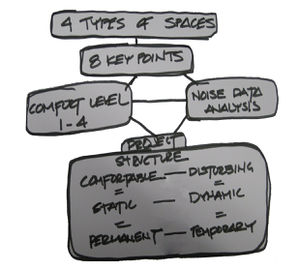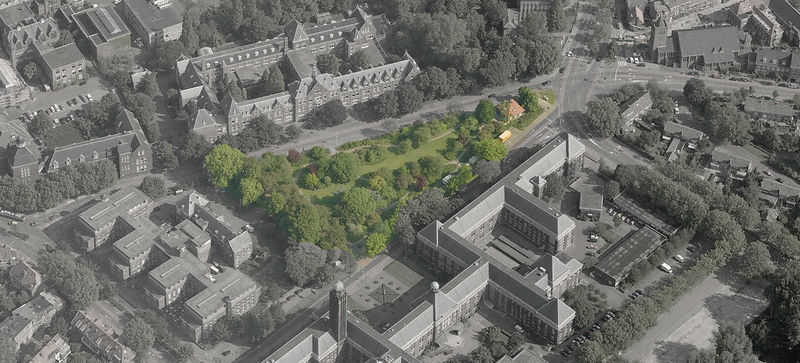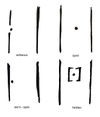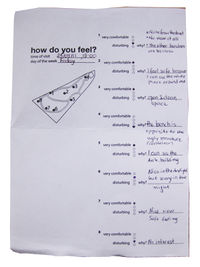atom03:Project
| Line 53: | Line 53: | ||
[[File:Atom3surveyex2.jpg|200px]] | [[File:Atom3surveyex2.jpg|200px]] | ||
| − | Secondly, with the help of a TU Delft acoustics expert we will measure | + | Secondly, with the help of a TU Delft acoustics expert we will measure soundpressure levels for a week, in specific time periods at the same 8 points. These are the preliminary [[atom03: results |results]]. |
</div> | </div> | ||
Revision as of 13:58, 28 September 2011
NOISE
From the beginning of the analysis, we found sound to be an important element of the site. The main reason for the sound level is the surrounding streets and the constant traffic; this made the area a crossing (temporary)space rather than congregational, as the site was originally intended
In order to integrate the site back to area and bring the community closer, we want to explore the relationship between architecture and sound, how a building reacts to sound, and how sound could be altered. We think sound and sound manipulation is a powerful tool to generate space and as a reaction to the surroundings of the site. We are also fascinated by the effect of sound in people, and how it can change someone's experience, therefore our sound study is complemented with an analysis of spatial comfort vs discomfort, and how much sound takes part in this.
PROBLEM
By means of personal observation and interviews ,we realized that noise,caused mostly by traffic, is affecting the site. It is also obvious that the park is lacking programmatic definition, the entrances are uninviting and are not strategicallyplaced. This results in many inhabitants, students and staff refraining from visiting the park.
CHALLENGE
Our challenge is to integrate the site with the surroundings, attract visitors and generate activity by manipulation of sound.
CONCEPT
Create a variety of spaces that can manipulate sound differently. The diversity is reminiscent of the variety seen at the current site , they should be interesting and a contrasting sequence for the visitor.
Step 1 We first have to define which areas are problematic regarding the sound levels and their effect on comfort levels. In order to obtain these results, we are doing a comfort/disturbance survey and a more precise sound data analysis. The questionnaire will have 1 main question about disturbance and comfort. People have to answer this question at 8 keypoints of the site. The results will help identify the problematic areas of the site which need manipulation.
Secondly, with the help of a TU Delft acoustics expert we will measure soundpressure levels for a week, in specific time periods at the same 8 points. These are the preliminary results.
Step 2
After having both the qualitative and quantitative results, we will be able to cross reference them have a link sound to spatial conditions, then proceed to our next step.

Step 3
As the stingray redirects water (medium) to achieve motion, our project will simulate this movement behaviour by redirecting air (medium) as a manipulative element of sound levels. This is possible by undulations on the surface of the ground controlling air/sound paths.
As a reaction to these deformations, spaces with unique characteristics will be generated at ground and underground level; these spaces will be categorized from static / comfortable / permanent to dynamic / disturbing / temporary with intermediate states as transitional spaces. To elaborate a little bit more on this; we want to create static spaces with a permanent function these functions will be situated at comfortable places within the site. The information whether a place is comfortable or less comfortable will be withdrawn from the qualitative survey (questionnaire). These static spaces will be linked to dynamic spaces with temporary functions situated at places which are less comfortable. By means of linking static and dynamic spaces a constrasting sequence will arise.




